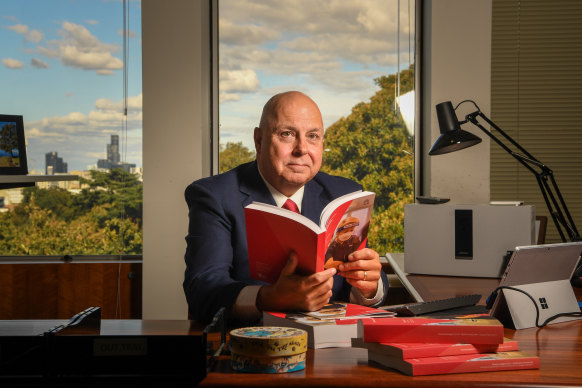Home » World News »
Pallas insists no debt blowout from rising interest rates
The Andrews government insists rapidly rising interest rates won’t lead to an unmanageable blowout in Victoria’s annual interest bill as public debt heads towards historically high levels.
After a major increase in spending and borrowing to insulate Victoria from the pandemic, the state’s debt is expected to hit $126.5 billion by 2025-26. That’s equivalent to 26.5 per cent of the state economy, the highest proportion since the early 1970s.
The issue of state debt was raised by dozens of voters surveyed as part of The Age agenda project, with significant concern that heavy borrowing has left Victoria in a financially vulnerable position.
But Treasurer Tim Pallas suggested Victoria remained well within its capacity to handle its interest obligations, as the state economy was bouncing back strongly and the budget was on track to return to surplus by 2025-26, which would allow the state to start paying back its debts.
“We are building the hospitals, schools and infrastructure that families need – and we have a clear plan to return the budget to surplus and stabilise pandemic debt,” Pallas said.
According to the predictions in the state budget, Victoria’s annual interest bill will hit $6.4 billion in 2025-26, equivalent to about 7 per cent of total revenue, the highest proportion since 1996-97.
Victorian Treasurer Tim Pallas insists the government has a plan to get the budget back on track.Credit:Justin McManus
Interest payments are expected average about 6 per cent of revenue over the four-year budget period, a level Treasury says is “modest” and well below the peak of 14 per cent reached in the early 1990s.
But since the government delivered the budget on May 3, the Reserve Bank has lifted its official cash rate six times, by a total of 2.5 percentage points.
The extent to which higher interest rates are already factored in to Treasury’s budget predictions is unclear. According to Treasury, its interest rate assumptions “broadly follow market economists’ expectations”, although the department does not spell out what those expectations are.
The budget papers show if interest rates turn out to be one percentage point higher than predictions, it would add, in net terms, about $2.5 billion to state spending over four years. More than $1 billion of that would hit the budget in 2025-26, potentially wiping out the $650 million surplus expected for that year.
According to a government briefing provided to The Age, higher interest rate rises have no impact on “the substantial proportion of bonds that are already locked in at fixed rates for extended periods”.
The briefing says the Treasury Corporation of Victoria, which manages most of the state’s debt, smooths the impact of interest rate movements by spreading largely fixed-rate borrowings evenly over a 15-year period.
This strategy, the briefing says, reduces the risk of large annual fluctuations in budget interest costs due to movements in interest rates.
The government’s budget strategy is focused on bringing the state back to an operating surplus by 2025-26, which will then allow it to start paying off Victoria’s debts.
The state opposition has promised to introduce a cap on the state’s debt levels, warning predicted net debt of $167.5 billion by 2025-26 would be the biggest in Australia, and more than NSW, Queensland and Tasmania combined.
But it has not said what the debt cap will be, and argues it needs more information on the state’s financial position.
The opposition has also announced that if elected next month, it will shelve Labor’s controversial Suburban Rail Loop policy, which is expected to cost up to $35 billion, with an $11.8 billion contribution from Victoria. It promises to allocate Victoria’s contribution to the health system.
The Morning Edition newsletter is our guide to the day’s most important and interesting stories, analysis and insights. Sign up here.
Most Viewed in National
From our partners
Source: Read Full Article



